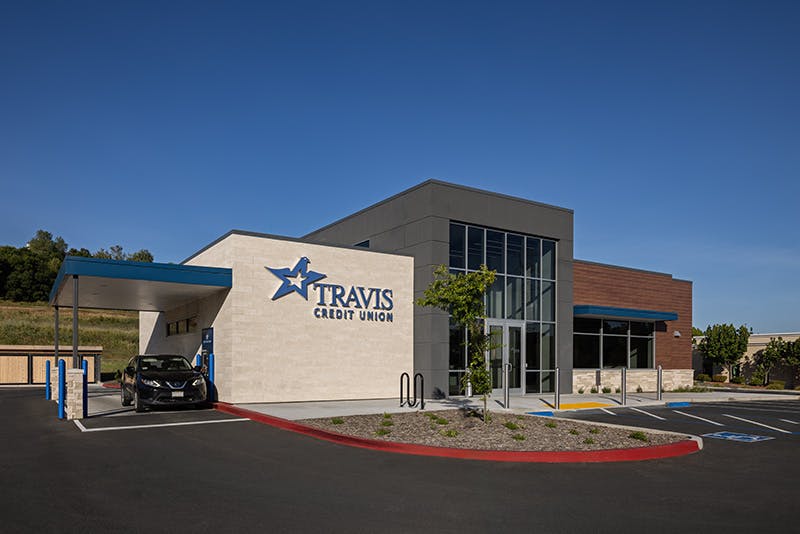One of the biggest challenges financial institution leaders face is dealing with underperforming branches. There are four keys to keep in mind that will empower you to overcome this challenge. I’ll use a specific story to illustrate and elaborate on the four keys—a recent story with Travis Credit Union.
4 Keys to the Process of Relocating an Underperforming Branch

Travis Credit Union’s branch network is located in California, with the majority of branches located in the area between Sacramento and San Francisco. Their leadership team engaged in a strategic process to evaluate the performance of their current branches and identify potential growth opportunities. That’s the first key.
1 - Regularly evaluate your current performance to identify growth opportunities.
Do you have a consistent, intentional process for evaluating your current branches and identifying potential new markets? You should. There are many factors to consider to make sure you’re evaluating each branch in light of the opportunities in their specific market. Learn more about how you can Decode Branch Performance in a previous article.
Travis Credit Union identified a specific location that was underperforming based on a detailed analysis of the surrounding community, including core deposit and loan opportunities. When the branch was launched years ago, the location was perfect. With changes in the market over the last 5-7 years, the branch was now in a dying retail center.
It didn’t seem to make sense to stay in that specific location anymore, but what about the employees and customers that were accustomed to that location? What would the impact be of closing and relocating? That brings us to the second key.
2 - Make tough decisions based on actionable insight.
The Travis team didn’t shy away from making the difficult decision to close the branch. Instead, they encouraged LEVEL5 to dig into the data and look for a new home for the branch that would provide the accessibility customers needed in a better location.
Sometimes, even when provided with relevant data, leaders hesitate to make the necessary changes. Especially if there is history or relational connections to a specific location or specific team members, it can be difficult to make these kinds of decisions.
We’ve found that financial institution leaders must base their decisions off of actionable insights, not history or relationships in order to achieve long-term health and growth of their branch networks. Once the Travis team was presented with both evidence that the branch was underperforming and a possible new location, they made the tough decision. That possible new location is the next key.
Ready to Grow?
Reach out and set up a launch call to learn about how we partner to enable the next
phase of your credit union's growth.
3 - A general idea of your next location isn’t good enough.
Many times, credit unions and community banks are advised to place a new location in a certain zip code—and that’s all the advice they receive. We all know that there can be huge variances in market opportunities within a zip code, which is why you need something more specific.
Travis Credit Union worked with LEVEL5—a strategic partner with years of experience in identifying and acquiring specific property exclusively for financial institutions. Leveraging our expertise in both site selection and acquisition, we were able to secure a pad site near the previous branch, but in a much more desirable location (which can be a rare find anywhere, but especially in California).
The new site provided the access members or customers would need as well as a boost to staff morale. Both customers and staff saw both the immediate benefit and future potential of the new location. By identifying and obtaining a specific piece of property, the decision was immediately embraced by everyone involved.
Once the decision was made, the Travis team began to move into the design-build process for their new location. What began as a challenge—an underperforming branch—was now an opportunity to design a new branch prototype focused on advisory services rather than merely transactions.
These design changes included elements they quickly realized could be implemented in other existing branches to enhance their entire network. Not only that, but LEVEL5 was able to manage all of the details while the Travis team could keep their focus on running the rest of their network. And that’s key number four.
4 - Find a partner you can trust.
LEVEL5 is a design-build company that empowers credit unions and community banks to grow, but this final point is true no matter who you choose as your partner. There are so many details to manage at every stage of the strategy-design-build process that you need a partner you trust—a partner that will guide you at each step of the way and handle the complexity with ease.
Travis Credit Union knows that California is a difficult place to do business. The levels of regulation at both the state and local levels can feel overwhelming. That’s why having the right partner to manage all of that is critical.
There are many different ways to go about the process of evaluating branch performance throughout your network, identifying and acquiring the best sites for future branches, and navigating the design-build process to deliver a high quality customer experience, but you’re going to need help along the way.
When you work with LEVEL5, you get a partner that’s knowledgeable, experienced, and committed to your long-term success.
If you master these four keys, you’ll unlock new growth opportunities for your financial institution and a repeatable process to help you win in every market.
This article first appeared on CUInsight.com



